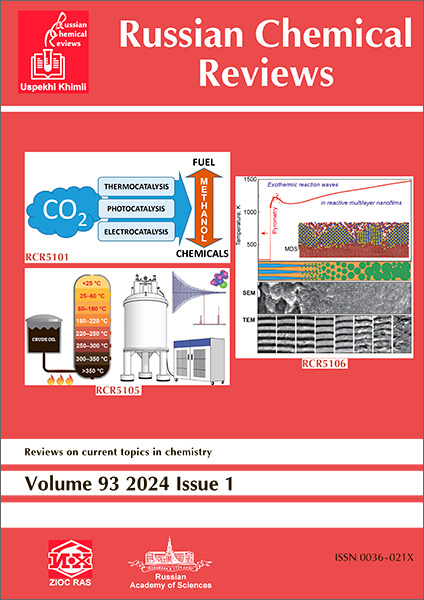基于偶氮苯和偶氮杂芳烃的光药理学化合物:分子设计、分子建模和合成原理
IF 6
2区 化学
Q1 CHEMISTRY, MULTIDISCIPLINARY
引用次数: 6
摘要
光药理学是利用光选择性地激活或灭活药物制剂的医学和药理学领域。这种方法显著增强和定位药物作用,从而减少其副作用。除了生物活性部分,任何光药理学化合物都应该含有光活性基团,它必须吸收所需波长的光,并在光激活后重组分子结构。设计一种有效的光药理学化合物需要仔细调整其物理、化学和生物特性。本文综述并分析了基于偶氮苯或偶氮杂芳烃的光药理学药物分子设计的主要方法。讨论了这类化合物光谱和光化学性质调谐的主要思路和方法。对比分析了它们的硅筛分的主要计算方法;合成偶氮苯和偶氮杂芳烃衍生物的最常见方法是系统化的。特别关注具有所需物理化学和光化学性质的光药理学化合物的分子设计的方法和途径。参考书目包括212篇参考文献。本文章由计算机程序翻译,如有差异,请以英文原文为准。
Photopharmacological compounds based on azobenzenes and azoheteroarenes: principles of molecular design, molecular modelling, and synthesis
Photopharmacology is a field of medicine and pharmacology that uses light to selectively activate or deactivate pharmaceutical agents. This approach significantly enhances and localizes the drug action and, therefore, reduces its side effects. Apart from the bioactive moiety, any photopharmacological compound should contain a photoactive group that must absorb light at the desired wavelength and reorganize the molecular structure after photoactivation. The design of an effective photopharmacological compound requires careful tuning of physical, chemical, and biological properties. The present review summarizes and analyzes the main approaches to the molecular design of photopharmacological drugs based on azobenzene or azoheteroarenes. The main ideas and methods used for tuning spectral and photochemical properties of compounds of this class are discussed. A comparative analysis of main computational methods for their in silico screening is carried out; the most common approaches to the synthesis of azobenzenes and azoheteroarenes derivatives are systematized. Special attention is given to the methods and approaches that are specific to the molecular design of photopharmacological compounds with required physicochemical and photochemical properties. The bibliography includes 212 references.
求助全文
通过发布文献求助,成功后即可免费获取论文全文。
去求助
来源期刊

Russian Chemical Reviews
化学-化学综合
CiteScore
13.00
自引率
5.20%
发文量
27
审稿时长
6-12 weeks
期刊介绍:
Russian Chemical Reviews serves as a complete translation of the esteemed monthly review journal Uspekhi Khimii, which has been a prominent figure in Russian scientific journals since its establishment in 1932. It offers comprehensive access to the advancements made by chemists from Russia and other former Soviet Union countries.
Established in 1932, Russian Chemical Reviews is committed to publishing timely and significant review articles encompassing various facets of modern chemistry, including chemical physics, physical chemistry, computational and theoretical chemistry, catalysis, coordination chemistry, analytical chemistry, organic, organometallic, and organoelement chemistry, chemistry of macromolecules, applied chemistry, biochemistry, bio-organic chemistry, biomolecular chemistry, medicinal chemistry, materials chemistry, nanochemistry, nanostructures, and environmental chemistry.
 求助内容:
求助内容: 应助结果提醒方式:
应助结果提醒方式:


